#Koichi Kawakita
Text
Let's put this to bed:
For some reason, there's a rumor going around online that the suit from Godzilla (1984) was stolen and to this day, nobody knows what happened to it. I don't know how this started or where it came from, but it's wholly untrue.
Firstly, there were two Godzilla suits made for the film. One for the main shooting, the other for "stunts" and water scenes and such. One of these suits was taken by Teruyoshi Nakano to North Korea and transformed into Pulgasari for Kenpachiro Satsuma to act in again.
How it started:
https://becominggodzilla.com/wp-content/uploads/2020/04/Return_1984_Screenshot_03.jpg
How it ended:
https://allthatsinteresting.com/wordpress/wp-content/uploads/2017/10/pulgasari-span.jpg
The other suit was at some point sent to America to do a publicity tour for the release of Godzilla 1985. Svengoolie (then, "Son of Svengoolie") even did a show back then with the suit on hand!
https://64.media.tumblr.com/c8236ab23914497cf118f8eb312ba504/6bbc7811252ac46b-d8/s1280x1920/e1b8d137ed6755413b7a76d05aefa093fcdc87a0.jpg
https://64.media.tumblr.com/f3e50da5f2a184a518b76946f6d460dc/6bbc7811252ac46b-3c/s1280x1920/c5cef9f0d70d59675b6304020fdad67675e7b2e8.jpg
https://64.media.tumblr.com/fd9a7a33db0b3174f18c1186b67b58c2/6bbc7811252ac46b-64/s1280x1920/6209fdef0043a0d37820ec0fbb38a156a70421a7.jpg
After that was over, the suit was sent back to Toho where it was used in several commercials. Since nobody's ever mentioned it, I presume Pulgasari was left over in North Korea where it eventually rotted away.
The only Godzilla suit ever actually stolen was the 1989 Biogoji, refurbished and used again in 1991. It was somehow swiped in mid-1992 just before shooting of Godzilla vs. Mothra began. Koichi Kawakita fully intended to use the Bio/Gidogoji suit yet again for the entire movie, even with its aging, floppy plates. But when it was stolen, he was forced to have a new suit made. The effects staff were relieved when the suit was stolen because there was some kind of problem with it and they didn't want to deal with it anymore. The suit was eventually discovered discarded in a ditch, probably because the damn thing was just so unwieldy (keep in mind, the lightest Godzilla suit for shooting ever made was still like 100 pounds). Kawakita ordered it repaired and it was used as like a stunt suit in vs. Mothra, which would be the final onscreen appearance for it.
#Godzilla#Gojira#Toho#kaiju#suits#The Return of Godzilla#Godzilla 1985#Godzilla vs Mothra#behind the scenes#Pulgasari#Teruyoshi Nakano#Koichi Kawakita#thievery#Svengoolie#rumors#lies
35 notes
·
View notes
Text

Godzilla vs. Biollante (1989)
#godzilla#koichi kawakita#godzilla vs biollante#toho#scifi#science fiction#monster#monsters#kaiju#daikaiju
16 notes
·
View notes
Photo

#bts#godzilla vs mechagodzilla ii#godzilla vs mechagodzilla#rodan#koichi kawakita#ゴジラvsメカゴジラ#ラドン#ゴジラ#川北紘一
80 notes
·
View notes
Text
youtube
Here's an improved version of the recording of The God of Clay I made at G-Fest 2017—cropped and with closed captions now. The last film Koichi Kawakita ever made, it's a fiercely anti-war piece that builds on a certain plot thread in Godzilla vs. King Ghidorah. If anyone wants to play around with the original file more, let me know.
61 notes
·
View notes
Text

I like dis one. One monster looks one way, an' da otha monster looks da otha way. And this guy's sayin' "Whaddaya want from me?"
#Godzilla vs. Destroyah#Destroyah#Koichi Kawakita#Godzilla#kaiju#suitmation#tokusatsu#Toho#behind the scenes#great Tommy DeVito quotes
16 notes
·
View notes
Text
New Production Blog! - Godzilla vs Biollante
After two months of hard work, I have finally pumped out my production retrospective history of the Heisei Godzilla's first versus film and the #1 favorite of Godzilla fans in Japan.
#Godzilla vs Biollante#Heisei Era#Heisei Godzilla#Biollante#Godzilla#Koichi Kawakita#Kazuki Omori#Tomoyuki Tanaka#Osamu Tezuka#Shinichiro Kobayashi
7 notes
·
View notes
Text

Il 5 dicembre è l'anniversario della nascita e della morte del regista Kōichi Kawakita
Kawakita è noto soprattutto per aver lavorato alla maggior parte dei film di Godzilla dell'era Heisi.
Info:--> https://www.gonagaiworld.com/il-5-dicembre-e-lanniversario-della-nascita-e-della-morte-del-regista-koichi-kawakita/?feed_id=324158&_unique_id=638dbeeac6c36
#Godzilla #Kaiju #KōichiKawakita #ゴジラ #ゴジラVSビオランテ #川北紘一
2 notes
·
View notes
Photo

Flashback to a Godzilla 2014 promotion. Here stands the late Koichi Kawakita in Nagoya with the hand of the King of the Monsters. [x]
35 notes
·
View notes
Photo


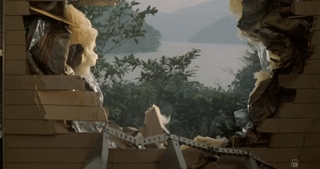


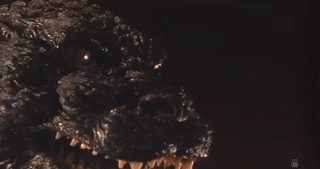


Godzilla vs Biollante (1989) dir. Kazuki Ômori
#godzilla#godzilla vs biollante#1989#kazuki ômori#kaiju#toho#tokusatsu#biogoji#biollante#heisei#koichi kawakita#cinema#film#practical effects
608 notes
·
View notes
Photo
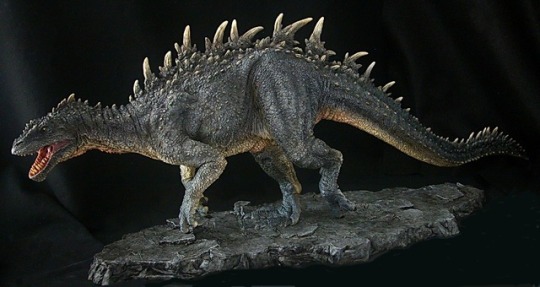

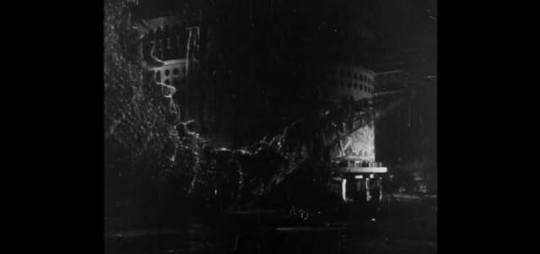

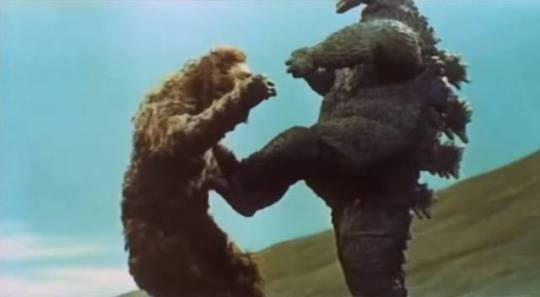
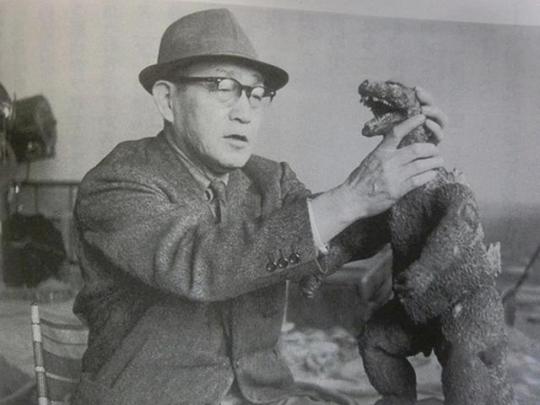
November is a big month for kaijū fans and aficionados. One reason is that November 3rd marks the anniversary of the original GODZILLA’s Japanese theatrical release in 1954. This year the Big G turns 63. Seeing how I technically missed the opportunity to do an anniversary post I thought I’d still like to put up something reflecting on the original film and its legacy. And then this topic came to mind…
A STOP-MOTION GODZILLA
Back in 2015 stop-motion animator and friend of this blog, Mark Wolf – best known for the educational paleo-short THE AGE OF MAMMALS (81) – offered up his speculations on how the original GODZILLA (54) may have been different if stop-motion animation, a la the work of Ray Harryhausen, had been used instead of suitimation. Wolf penned this piece as part of a series of posts for The Fantastic World of Ray Harryhausen Facebook page called “What If Ray Harryahusen Had Made… Theatre.” I found Wolf’s conjectures and insights fascinating and this led to a discussion between us about how and why stop-motion was and wasn’t used on GODZILLA.
To be clear Wolf was never attempting to disparage the original GODZILLA as a film, writing that he “respect[s] the original Japanese GOJIRA’s black & white cinematography, impressive score and anti-nuke sentiments” but nevertheless finds “the visualization of Godzilla… laughable, especially when compared to KING KONG (33) or THE BEAST FROM 20,000 FATHOMS (53).” In particular, Wolf highlights the scenes of Godzilla’s maritime activity noting that while Godzilla sinks multiple boats in his premiere film he never appears in the same shot as any of them, which is in stark contrast “to [a similar] shot in BEAST when the Rhedosaurus sinks a ship.” Because Wolf believes that stop-motion provides a better “performance” then suitimation he says he’ll gladly take “Ray’s approach every time.” Note that Wolf’s emphasis here is on “performance,” not realism. Many western critics reject tokusatsu films for looking “fake,” but Wolf openly acknowledges that stop-motion is no more “realistic” looking then suitimation.
As for other ways GODZILLA may have been different had stop-motion been employed, Wolf starts off by pointing to Godzilla’s American precursor; THE BEAST FROM 20,000 FATHOMS (53). Based on the short-story “The Foghorn” by Ray Bradbury and published in The Saturday Evening Post in 1951, Wolf observes that the dinosaur featured in the original painting by James Bingham which accompanied the story’s debut “looks more like Godzilla” then the model creature that Harryhausen would later produce. Wolf speculates that had stop-motion been involved in the production of GODZILLA that the titular monster, freed from the constraints of needing to fit a human inside its anatomy, may have also been much closer to that of Bingham’s painting or even the Rhedosaurus from BEAST and points to Tony McVey’s re-imagined model of Godzilla as a quadruped as one possibility.
However for everything gained something must be lost and Wolf writes that the downside to a stop-motion Godzilla is that it would have almost certainly annulled SFX director Eiji Tsuburaya’s impressive miniature cityscapes. Wolf notes that Harryhausen “tended to avoid” such elaborate miniatures “because they were repetitious and limited in their performances” preferring instead to composite his creatures into live-action sets.
All this speculation of course gives rise to the question of why Tsuburaya – a great admirer of Willis O’Brien’s work on KING KONG – didn’t employ stop-motion on GODZILLA? On this point Wolf addresses the two most frequently circulated claims about why Tsuburaya didn’t employ stop-motion: A) because “Toho couldn’t afford stop-motion” and B) because “no one in Japan at the time [was] capable of pulling off the effect.” With regards to both of these claims Wolf argues that neither makes any sense. Regarding cost Wolf points out that many of Harryhausen’s films, like “EARTH VS THE FLYING SAUCERS (56) had a $120k negative cost,” which is well below GODZILLA’s entire production budget of $175k. As for the claim that Japan lacked talented stop-motion animators, this is entirely erroneous and flies in the face of the fact that “there is stop-motion in GODZILLA, including the most singularly bizarre use of model animation for VFX, ever - a shot of a fire truck overturning and spilling two firemen who have been riding on the sides (note how the headlights come on as the scene progresses)” as well as “a different shot, of Godzilla’s tail, [which] is ideal for animation and I am not at all surprised they tried it at least once.”
Wolf goes on to speculate that the real reason that Tsuburaya didn’t employ stop-motion is because director Ishiro Honda was “impatient” – basically envisioning a scenario similar to what happened to O'Brien while working on Irwin Allen’s THE LOST WORLD (1960) which I’ve previously blogged about here. However on this point I had to correct Wolf, since the decision not to use stop-motion on GODZILLA wasn’t Honda’s but rather actually came down from Toho Studios Production Manager Iwao Mori, and only after Tsuburaya told him that it would take seven years to complete the film if stop-motion was used. Wolf found this claim, that Tsuburaya estimated it would take seven years to film GODZILLA with stop-motion, “hilarious” and wondered where he got such a ridiculously inflated number from since he would have “certainly [known] KONG didn’t take years to film” and noting that on average “the VFX for [a Harryhausen film like] JASON AND THE ARGONAUTS (63) [only] took nine months.” BEAST only took a year.
In light of this I have to wonder if Tsuburaya was truly being sincere or deliberately hyperbolic when he told Mori it would take seven years to shoot GODZILLA with stop-motion. Was Tsuburaya really that ignorant about how long such a process would take? Or was it Mori who wanted stop-motion and Tsuburaya who didn’t and knew he could scare the producer out of the idea with such an over-the-top estimate of the time needed to film the movie?
However even if it wouldn’t have actually taken Tsuburaya seven years to do GODZILLA in stop-motion it nevertheless would have still been unfeasible since, as I pointed out to Wolf, the one thing Tsuburaya didn’t have was time. It’s important to remember that the original GODZILLA was not a well-planned out film. GODZILLA was released on Nov. 3rd, 1954 and producer Tomoyuki Tanaka came up with the idea on a plane ride back to Tokyo in mid-April of that same year as a last minute replacement for a war movie which had fallen through. Though Tanaka would go on to relate a number of tall-tales over the years about what his inspiration for Godzilla was, the reality clearly appears to be that the trade papers at the time were reporting that Toho’s main studio rival, Daiei, was going to be releasing THE BEAST FROM 20,000 FATHOMS in Japan in December of ‘54 and that Tanaka had decided that Toho could beat them to the punch by whipping out their own domestic monster movie a month before. Here Wolf also points out that WB, the US distributors for BEAST, had netted a nice $5-Million in box office returns on the film after only paying $250k to acquire it, numbers which certain caught the eyes of execs at both Toho and Daiei. Once Tanaka had convinced his fellow Toho brass to invest in this admittedly risky venture, spending three times what they had spent on any previous film on GODZILLA, pre-production got underway in early May and production in early July. Tsuburaya’s team didn’t begin work however until August at which point they had about two months to shoot the 263 SFX shots (out of 868 shots) needed for the film. Steve Ryfle writes in his book Japan’s Favorite Mon-Star (98) that all-total Tsuburaya spent 71-days shooting the special-effect scenes for GODZILLA. As Wolf acknowledged, with such a small window of time to work in “not much could [have been] delivered” if stop-motion had been employed, “so hand-puppets, animatronics, [and] suits would [have made more] sense.”
But Wolf also finds himself still puzzled over GODZILLA’a random use of stop-motion, including that perplexing and admittedly unconvincing fire truck scene which he feels strongly that “no sane VFX Director would [have] elected to do” in stop-motion given that one of the things stop-motion is historically poor at portraying is objects moving at high speeds. The end result of such a shot is what for all the world looks like a toy fire truck with dolls being knocked over. I told Wolf that while I didn’t know about the fire truck scene itself I thought an apt parallel to it could be found in August Ragone’s 2007 biography of Tsuburaya in which he recounts a popular antidote concerning the 1965 Toho film FRANKENSTEIN CONQUERS THE WORLD. Here Tsuburaya needed to shoot a scene in which the dinosaur-like kaijū Baragon attacks a stable full of horses. To accomplish this some decidedly fake looking miniature horses were placed in the scene for the monster to menace. When asked by a young intern why he had opted for the model horses over a composite shot using real horses Tsuburaya simply replied: “Because using a model horse was more fun!” Personally I think this antidote tell you everything you need to know about Tsuburaya and his aesthetic philosophy when it came to special-effects.
Tsuburaya would employ stop-motion in one other Godzilla film, 1962’s KING KONG VS GODZILLA, which is actually based on a story idea originally conceived by Willis O’Brien for a Kong sequel is which the supersized simian would have fought a giant-sized version of Frankenstein’s Monster. The first example of stop-motion in KING KONG VS GODZILLA is during the attack of the giant octopus on Faro Island where several of the octopus’ tentacles are stop-motion. Later there are several long-distance and aerial shots of both Kong and Godzilla which are done with stop-motion models. However the most obvert and dramatic example is a brief sequence in which Kong charges Godzilla, prompting Godzilla to rear up on his tail and deliver a kangaroo-kick to Kong’s chest; knocking the giant ape backwards. Another reason why Tsuburaya likely abandoned using stop-motion in his films is because it did not convincingly match the look of the suitimation monsters. This was the reason given by special-effects director Koichi Kawakita – who had mentored under Tsuburaya – for his own rejection of stop-motion when he assumed the role of head SFX-director at Toho beginning with GODZILLA VS BIOLLANTE (89). Kawakita had considered using stop-motion in this film and had a roughly 20-second sequence made in which Godzilla fights off the plant monster’s tendrils. However it was never used, ultimately being relegated to the deleted scenes section of the DVD and eventually YouTube.
IMAGES
1) Tony McVey’s re-imagined Godzilla model kit
2 - 3) The only two stop-motion shots to appear in the original GODZILLA (54)
4 - 5) Kong and Godzilla throw down stop-motion style briefly in KING KONG VS GODZILLA (62)
6) Eiji Tsuburaya with his underutilized stop-motion Godzilla puppet
#godzilla#godzilla 1954#eiji tsuburaya#stop-motion#stop-motion animation#ray harryhausen#koichi kawakita#willis o'brien#ishiro honda#tomoyuki tanaka#suitimation#rhedosaurus#the beast from 20000 fathoms#ray bradbury#mark wolf
124 notes
·
View notes
Photo


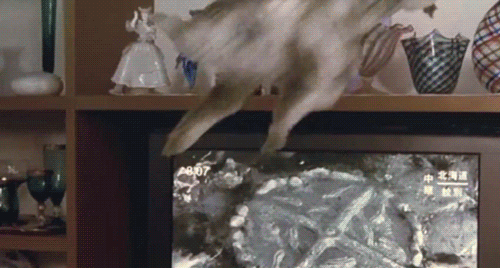

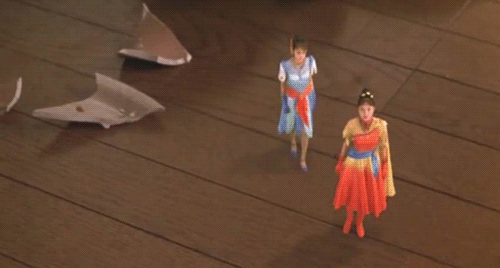

#Rebirth of Mothra#Mothra#Elias#Shobijin#Fairy Mothra#Belvera#Garu garu#kaiju#kaiju movies#kaiju eiga#toho#tokusatsu#Koichi Kawakita#Megumi Kobayashi#Sayaka Yamaguchi#Aki Hano#Hitomi Takahashi#Okihiro Yoneda#mine#my gif
383 notes
·
View notes
Photo


Godzilla vs The Monster Army (1989) Rental VHS
#godzilla vs the monster army#vhs#godzilla#anguirus#mothra#koichi kawakita#ゴジラ vs 怪獣軍団#アンギラス#モスラ#川北紘一
58 notes
·
View notes
Text
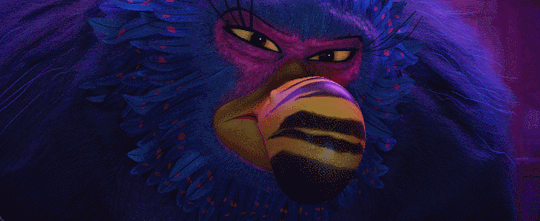
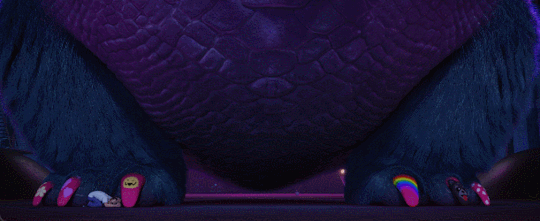

Average Koichi Kawakita monster
18 notes
·
View notes
Photo
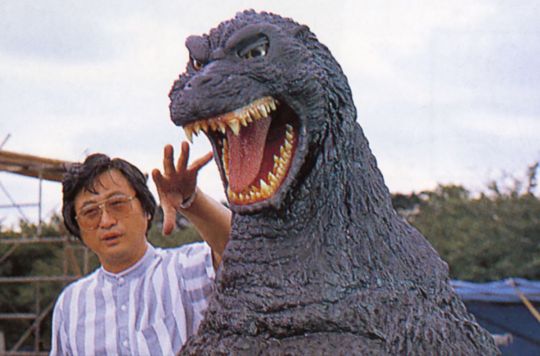
Godzilla doesn’t even try to stifle a yawn as his boss, Koichi Kawakita, drones on and on explaining special effects work to the press.
13 notes
·
View notes
Photo

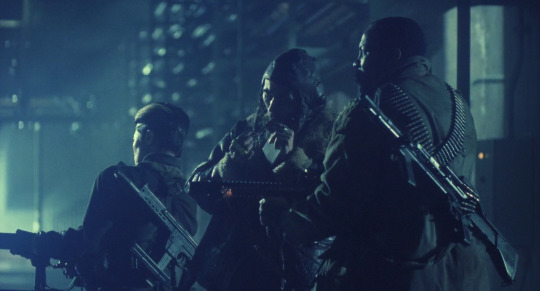
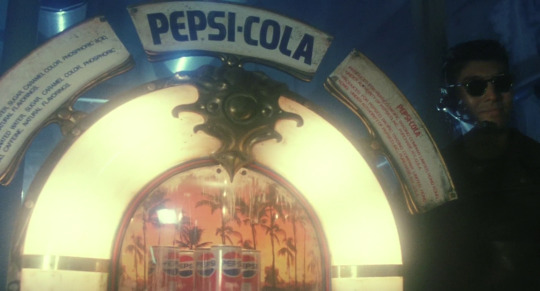
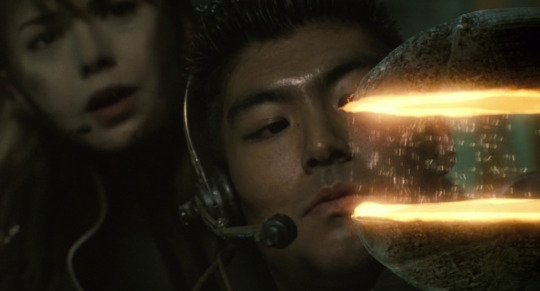
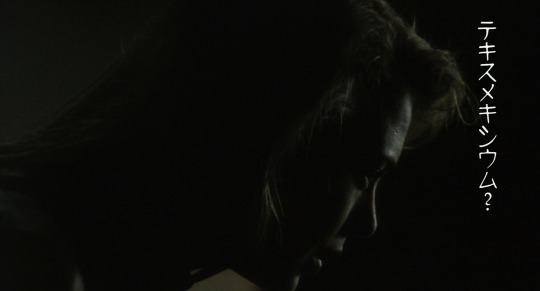





Gunhed 『ガンヘッド』(1989)
Directed by Masato Harada 原田 眞人
& Koichi Kawakita (sfx) 川北 紘一 (特撮)
#gunhed#ガンヘッド#1989#80s movies#80s japan#japanese cinema#japanese movies#japanese film#sfx#mecha#special effects#minatures#cinema#movies#film#action movies#sci fi#sci fi movies#masato harada#原田 眞人#Koichi Kawakita#川北 紘一#japan film club
508 notes
·
View notes
Photo

God of Clay
11 notes
·
View notes